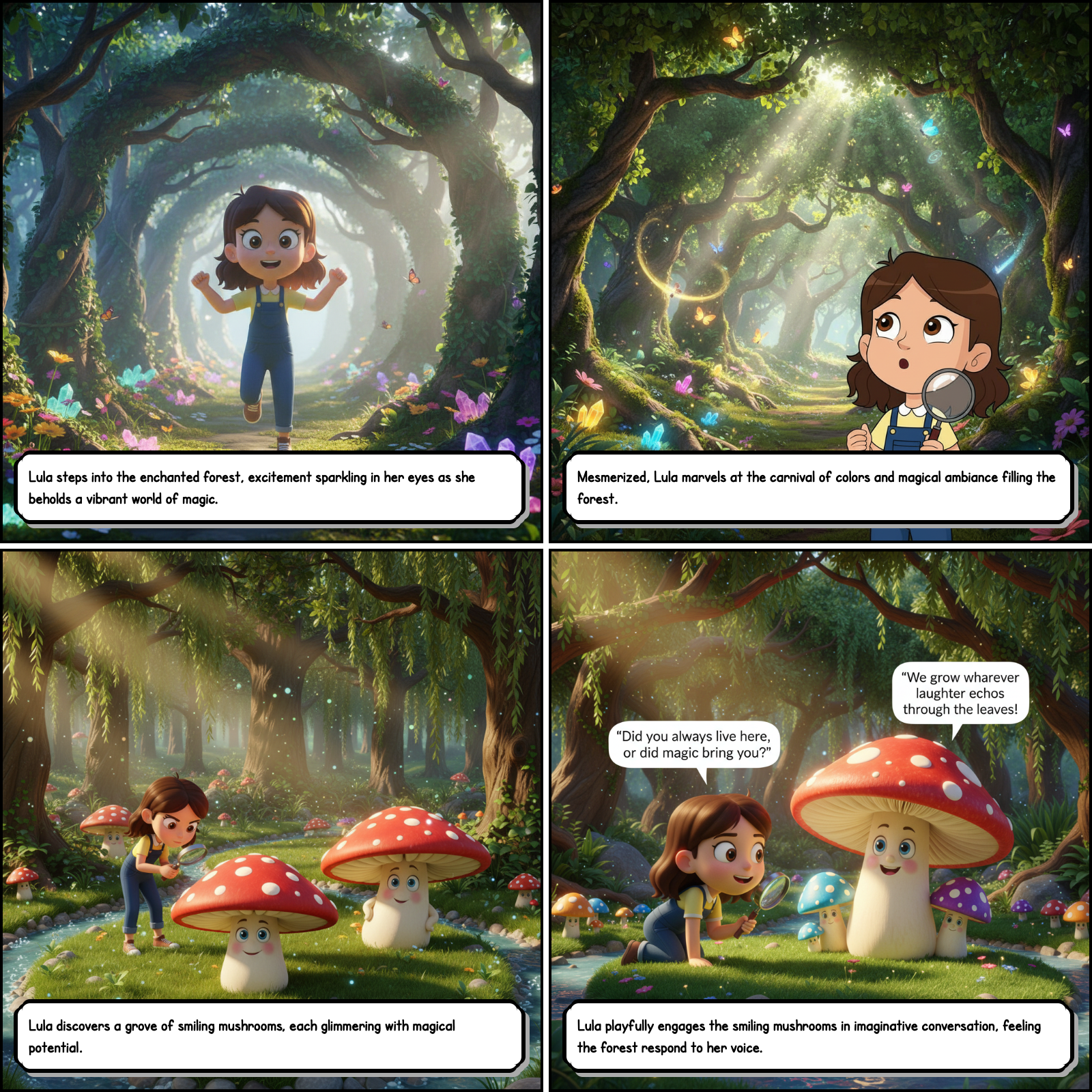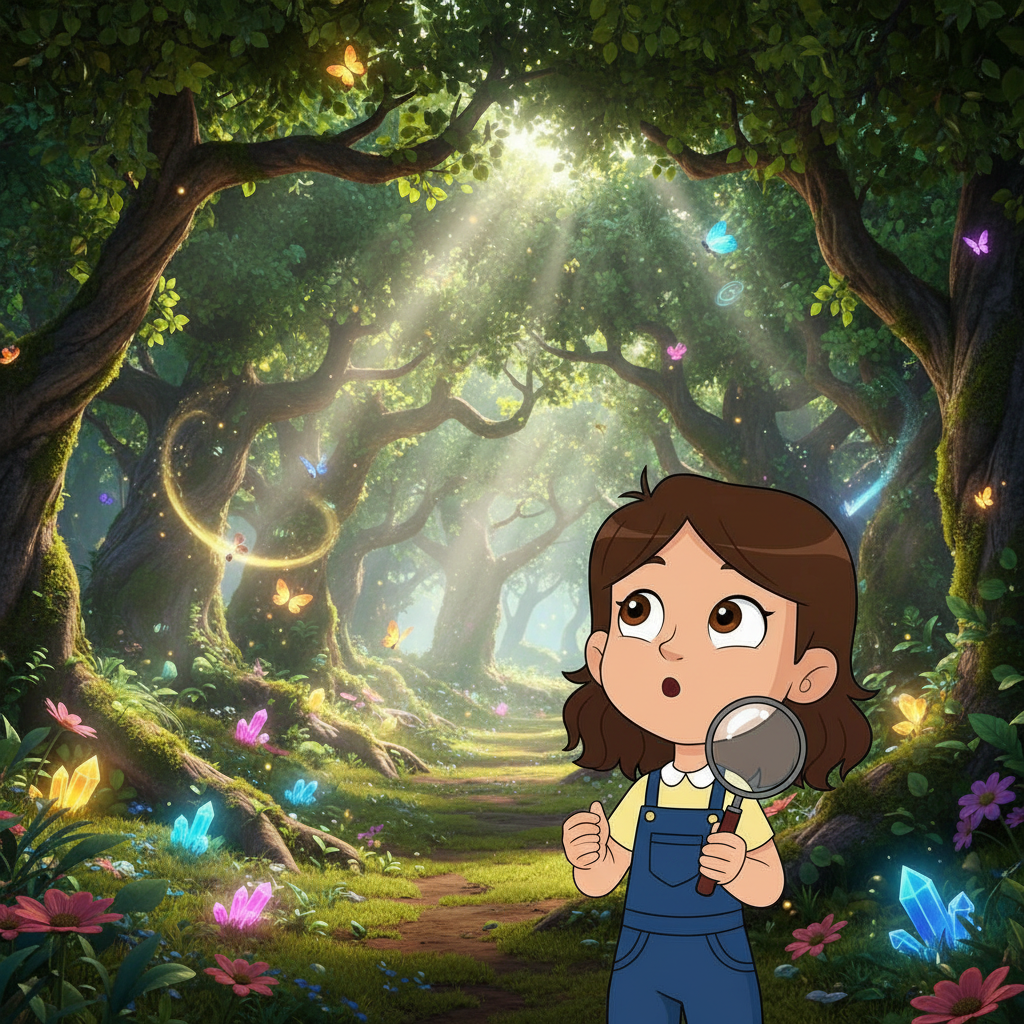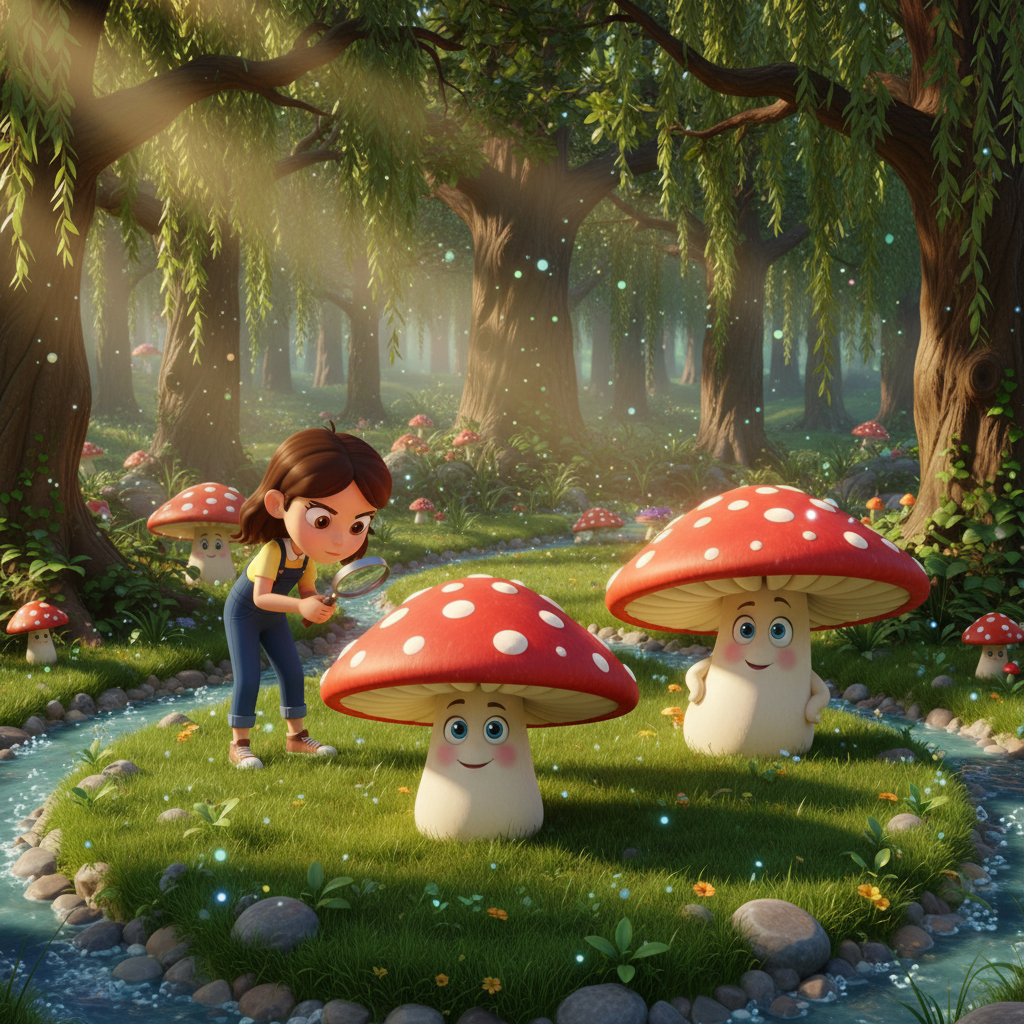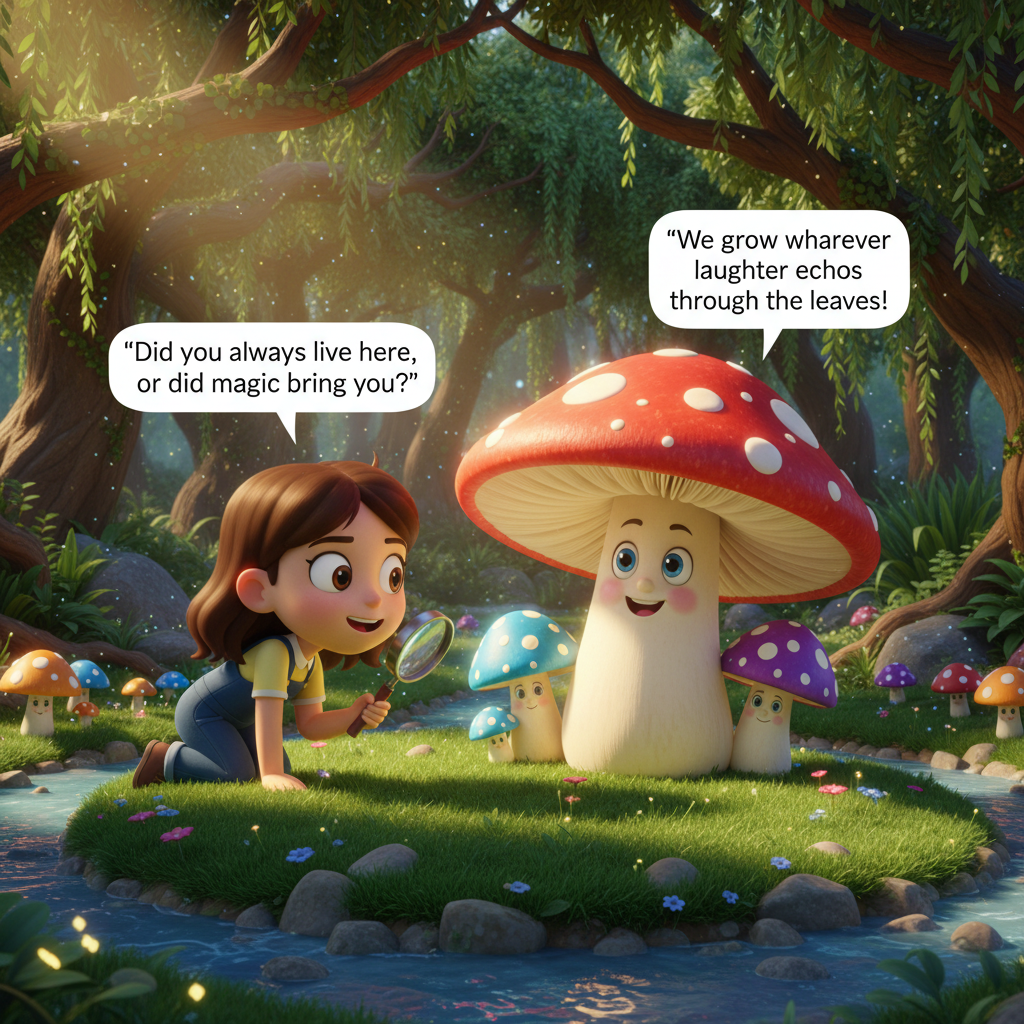Pixar-Inspired AI Comic Adventure in Enchanted Forest
Explore the magic of AI-generated comics with Lula's enchanted forest adventure, where Pixar-style charm meets Unreal engine precision.
A Journey Through an AI-Generated Enchanted Forest
Artificial Intelligence has now emerged as a powerful tool for creative storytelling. In this blog post, we explore an enchanting comic art piece titled  . This Pixar-inspired 3D render animation showcases not only a whimsical narrative but also the sophisticated technical wizardry behind each panel.
. This Pixar-inspired 3D render animation showcases not only a whimsical narrative but also the sophisticated technical wizardry behind each panel.
Our heroine, Lula, embarks on an unforgettable adventure in an enchanted forest where every detail, from smiling mushrooms to jaunty squirrels wearing tiny top hats, is brought to life with the crisp precision of the Unreal engine.
Below, we analyze this artwork across several dimensions including best practices in AI comic creation, ensuring consistency in sequential art, and the technical details behind this mesmerizing creation.
Panel-by-Panel Breakdown
The artwork is divided into a series of panels that engage the viewer with a blend of delightful visuals and imaginative narrative. Below are the embedded panels with their associated images and captions:




Best Practices for AI Comic Creation
Creating compelling AI comics is as much about the creative narrative as it is about technical finesse. Below are some best practices and insights from this artwork:
1. Effective Prompt Engineering Techniques
The foundation of AI-generated art begins with crafting the right prompt. In this case, the detailed narrative including unique character traits, contextual scene descriptions, and artistic style recommendations served as a beacon for the AI. The prompt provided a mix of narrative cues (e.g., Lula's enthusiastic dialogue) and technical direction (e.g., Pixar's 3D render style, Unreal engine quality), ensuring that the output was consistent and immersive.
- Be specific about the narrative sequence.
- Incorporate desired art styles and technical details from the outset.
- Include emotional cues that help characters resonate with the audience.
2. Parameter Selection and Optimization
By meticulously selecting parameters like lighting, camera angles, and animation styles, the creator has achieved a uniform look that appeals to both the eyes and the heart. The use of bright and vibrant lighting in day scenes versus natural sunlight filtering through leaves demonstrates thoughtful parameter optimization to maintain a lively atmosphere.
- Use consistent parameter settings for panels to ensure visual cohesion.
- Adapt camera shots and movements across panels for a dynamic narrative flow.
- Optimize render settings to balance realism with the hand-crafted feel of animated art.
3. Workflow Recommendations
A structured workflow will always elevate the quality of an AI-generated comic. Begin by outlining your desired storyline and then integrate detailed panel directives. Iterative testing and adjustments are essential – from dialogue placements to the rendering of individual elements like characters and backgrounds.
- Develop a storyboard before generating final art assets.
- Iterate on designs using parameter tweaks and prompt adjustments.
- Maintain a consistent design language across all panels through a centralized style guide.
Maintaining Consistency Across Panels
Visual cohesion in sequential art is paramount. In this project, we observe consistency maintained in several key areas:
Character Design
Characters such as Lula are portrayed with consistent facial expressions, clothing styles, and proportions across panels. Each asset, whether it's Lula's magnifying glass or the oversized eyes of the bluebirds, is showcased uniformly, ensuring that the viewer's connection to the character is never lost.
- Define character attributes in the initial prompt.
- Reuse style settings for each character across all panels.
- Ensure consistency in color palettes, reflecting thematic continuity.
Art Style and Technique
The Pixar-inspired 3D render animation is supported by crisp line work, vibrant coloring, and detailed shading. The decision to employ Unreal engine-level detail guarantees that the animated illustrations feel both technologically advanced and artistically enchanting.
- Maintain a limited but vibrant color palette.
- Use similar shading and lighting techniques across all scenes.
- Apply a uniform line style to enhance the overall narrative impression.
Backgrounds and Environmental Details
The enchanted forest is portrayed with repetitive yet evolving elements – whether it's the magical glow of dewdrops or the smiling mushrooms that dot the path. These details ensure that every panel feels like a part of a larger, cohesive world.
- Replicate background settings with slight variations to maintain interest.
- Implement consistent lighting sources and perspectives.
- Incorporate minor details (like dancing bluebirds) uniformly across panels.
Technical Details of This Artwork
For enthusiasts curious about the technicalities behind this AI-generated comic, here are some insights:
Prompt Parameters and Style Settings
The artwork was crafted through precise prompt engineering, which included:
- Detailed descriptions of character emotions and actions.
- Specific lighting instructions (e.g., bright and vibrant for daytime, natural sunlight filtering through leaves).
- Direction for camera shots (wide shots, medium shots, static, and slow pans) to create narrative depth.
- Integration of stylistic influences from 3D render animations and Pixar aesthetics combined with Unreal engine sophistication.
Recommendations for Parameter Adjustments
While the artwork is highly refined, a few improvements could include:
- Experimenting with dynamic camera movements to add more visual drama.
- Tweaking magnification effects when using Lula's magnifying glass to further enhance detail retrieval.
- Slightly varying the environmental animations (e.g., adding more interactive responses from the forest) to reinforce the narrative of a living world.
Achieving Visual Cohesion in AI Sequential Art
Visual cohesion goes beyond maintaining consistent characters and styles. It involves a holistic approach that binds every panel together as part of a larger narrative puzzle. Here are some tips:
-
Develop a Style Bible: Create a reference document detailing every visual and technical element including color palettes, character models, and lighting setups. This ensures every panel remains true to the overarching theme.
-
Use Shared Assets: Reuse key design components across panels, such as Lula's attire, the structure of the enchanted forest, or recurring motifs like top-hatted squirrels. This not only saves time but also strengthens continuity.
-
Iterative Review Cycles: Regularly review and refine your panels. Use feedback loops to address any inconsistencies in character portrayal or environmental details.
-
Modular Design: When working with AI-generated components, design in modules that can be adjusted individually without affecting the planned composite look. This makes it easier to implement last-minute tweaks while preserving the global narrative consistency.
Conclusion
The AI-generated comic featuring Lula in the enchanted forest is a testament to the merging of creative storytelling with technological innovation. It illustrates how thorough prompt engineering, strategic parameter selection, and a focus on visual consistency can create an engaging and cohesive narrative experience. The comprehensive approach taken in designing each panel, merging Pixar-inspired charm with the robust capabilities of the Unreal engine, offers invaluable insights for artists and creators seeking to harness AI for sequential art.
Whether you are a seasoned digital artist or an enthusiast exploring the realms of AI visual narratives, this comic provides a compelling case study on the best practices for generating creative and technically sound artwork. Embrace the blend of innovation and inspiration, and let the enchanted forest of AI creativity inspire your next project!
Happy creating!